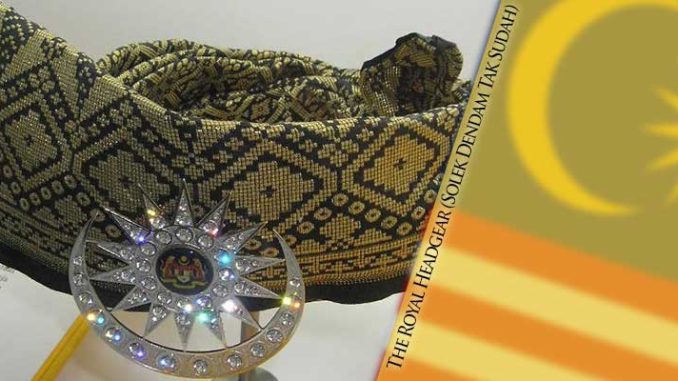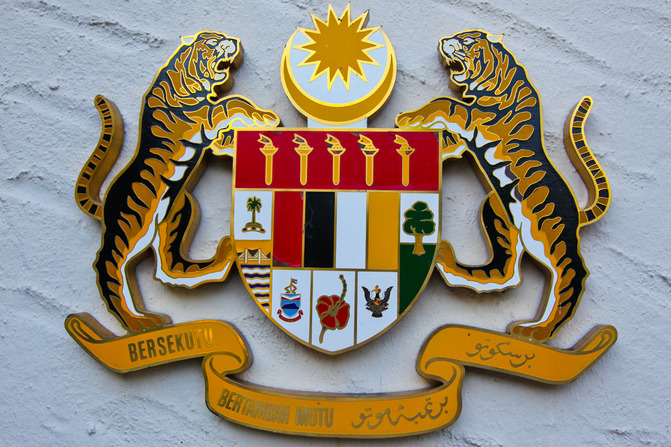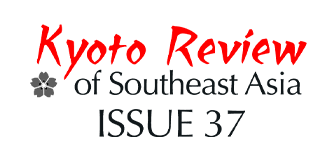
The Monarchy in Malaysia: Struggling for Legitimacy
Lately, there has been a resurgence of scholarly interest in the political role of the monarchy in Malaysia, as manifested by the publications of recent studies by Kobkua Suwannathat-Pian, 1 Anthony Milner 2 and Ahmad Fauzi and Muhamad Takiyuddin. 3 Such a revival would not have come about without the presence of monarchy-driven factors, as related especially with the rise of the monarchy’s profile in public affairs since the passing of the era of Dr. Mahathir Mohamad as Prime Minister (1981-2003). Seen from two angles, this development has positive implications. First, research on the Malaysian monarchy has been relatively neglected. Critical works by academics based in Malaysia’s public universities are virtually non-existent, being inhibited by the possibility of being indicted for lèse-majesté against a royal institution officially consecrated by the Federal Constitution. Second, a re-invigoration of the role of the monarchy in the public domain serves to enlighten the younger generation of Malaysians to the utility, flexibility and vitality of Malaysia’s royal families in adapting to changing times. Better exposed to values of the country’s ‘new politics’ such as social justice, transparency and democratic accountability, the youth are susceptible to dismissive views on the political future of the monarchy. Ever since the highly educated Crown Prince of Perak, Raja Nazrin Shah, delivered a public lecture in July 2004 on the necessary changes demanded from the monarchy to prevent it from falling into antiquity, 4 members of the royalty have been seen to assiduously court public opinion and present themselves as the people’s ‘protector’ – an advancement of sorts after prolonged years of subservience to politicians running the executive branch of government under Mahathir’s centralised regime.
In the wake of the shocking results of Malaysia’s twelfth general elections of March 2008, tension between feudal characteristics and modern structures of governance surfaced. The United Malays National Organisation (UMNO), the dominant partner in Malaysia’s ruling National Front (BN or Barisan Nasional) coalition, retreated from its traditional role as ‘substantive protector’ of the indigenous Malay populace. 5 In truth, the process had begun since the onset of Abdullah Ahmad Badawi’s administration (2003-2009), during which political space was opened up amidst a general atmosphere of liberalisation. However, the resurgence of the monarchy, while filling the gap vacated by UMNO’s retreat into self- introspection, could have so easily been mistaken as a revivification of conservative Malay ideals or perhaps even a covert attempt of re-asserting UMNO’s ethnocentric claims to power. Such conservative backlash against the modernising multi-ethnic trajectory of Malaysia’s political categories has accentuated further during the premiership of Najib Razak (2009- now), whose grandiose 1Malaysia scheme has yet to receive wholehearted endorsement from UMNO. In a last-ditch effort to arrest the erosion of support to UMNO among grassroots Malays, party conservatives and ultra-conservative Malay non-governmental organisations (NGOs) are playing the race card by depicting the monarchy – the symbolic institution of Malay hegemony, as being in danger of abolition by allegedly anti-Islamic and republican elements lurking in Malaysia’s main opposition parties. Should they form the government in Putrajaya after the upcoming thirteenth general elections – dubbed as the ‘mother of all elections’, the opposition People’s Pact (PR or Pakatan Rakyat) 6 is faced with the daunting task of not only wooing the bureaucracy, which has never served a non-BN government at federal level, but also of neutralising potential damage wrought by a possibly turbulent relationship with the monarchy. The Perak constitutional crisis of 2009-10, when the Perak royalty sanctioned the transfer of power from a PR government to a BN state administration following the renunciation of loyalty to the incumbent by three erstwhile PR state legislators, remains etched in the minds of PR leaders. That the state institutions conspired to bring about the downfall of PR in Perak is allegedly substantiated by judicial confirmation of the legality of the power transfer, albeit without going through a vote of no confidence in the state legislative assembly. The crucial factor determining the outcome of the whole saga was the conviction expressed by Sultan Azlan Shah, a former Lord Chief Justice himself, that the PR government had lost its majority in the state legislature, thus his approbation for the formation of a new BN administration.

For protagonists of new politics, reformists and supporters of PR, the Perak constitutional crisis was disappointing in its affirmation of the monarchy as an institution still entangled in feudal politics. Ironically, it was the Perak sultanate which sparked off efforts to foreground the novel role of the monarchy within a contemporary setting. The crisis left an indelible impression on the Perak royalty. To what extent, for instance, was it really prepared to advocate and perhaps lead reform of the monarchy? After the Perak episode, controversies involving the monarchy arose in quick succession: the suspension of prominent professor of constitutional law Aziz Bari from his university position for criticising the Sultan of Selangor, displeasure voiced out by royals at the quest for electoral reform marshalled by the Coalition for Clean and Fair Elections (BERSIH) and misdemeanours allegedly committed by members of the Johore royal household. Its image already tarnished, the monarchy’s legitimacy became further questioned by the apparent willingness of royal households to be identified with the cause of conservative elements in UMNO, the mainstream media, right- wing NGOs and Malaysia’s docile civil service. Defending the hallowed position of the monarchy within Malaysia’s embattled polity emerged as one of their political rallying cries.
An important aspect to be considered by the monarchy in adapting itself to contemporary political realities is people’s wide expectations that it be more appreciative of universal values which transcend ethnic and religious boundaries. In May 2012, former Perak chief minister Mohammad Nizar was severely chided for raising concern over the Sultan of Johore’s allegedly wasteful purchase of special vehicle plate numbers at the bidding price of RM520,000. Exhortations from state-affiliated stakeholders that Nizar be charged under the Sedition Act emphasised UMNO’s and BN’s purported devotion to the monarchy as a venerable emblematic institution. Subsequently, in November 2012, twenty-seven year old quantity surveyor Ahmad Abdul Jalil was arbitrarily arrested for allegedly ridiculing the Sultan of Johore through the social media network Facebook, thereby kindling further dismay of the monarchy. 7 Such heavy-handedness, however, have not stopped the barrage of discontent directed against both the BN-led state and the monarchy in alternative media outlets. Weblogs and websites detailing the royals’ frolics and uncouth conduct can easily be found in cyberspace. The advances in information and communications technology, while affording a medium for the royals to communicate directly with the public, have also raised eyebrows with regard to their extravagant lifestyles and reckless personalities, which were anomalous for them as titular heads of Islam in their respective states. Malay-Muslims, for whom attachment to the monarchy has always been an important facet of their political lives, have been understandably troubled by embarrassing revelations about the realities of less than Islamic activities taking place behind doors of the state-funded palaces. In view of the continuous pleadings from the monarchy and its advocates for preservation of the institution as a bulwark of both Malay and Malaysian nationalism, the onus lies on the monarchy itself to prove itself to be “affordable”, to “share how the people feel’ and not ‘perceived to be against the population”. 8
Sultan Muhammad V of Kelantan: A New Breed of Monarchy?
Amidst the generally gloomy picture surrounding the reputation of the monarchy, optimism of the future of the institution was raised with the installation of Tengku Faris Petra as Sultan Muhammad V of Kelantan to replace his incapacitated father, former Sultan Ismail Petra, in September 2010. In December 2011, he assumed the role of Deputy Yang DiPertuan Agong upon the ascent of Sultan Abdul Halim Muazzam Shah to the throne of the Yang DiPertuan Agong for the second time. Being comparatively young and hailing from a state long ruled by the opposition, Sultan Muhammad V injected vigour into the monarchy with his simple lifestyle, humility, friendly disposition and avoidance of controversies which had beleaguered the Kelantan royal household. It was widely rumoured that his parents had favoured his younger brother Tengku Fakhry Petra to succeed the throne, but Tengku Fakhry’s flamboyance, as made infamous by his high-profile marriage and messy divorce with Indonesian teenage model Manohara, rendered him unfit in the eyes of the Kelantan palace elders and indeed the public. More importantly for Sultan Muhammad V, he had cultivated a cordial understanding with Kelantan’s veteran chief minister Nik Aziz Nik Mat from PAS. His own religiosity no doubt factored into his volatile relationship with his father, who was seen as being backed by UMNO. Preferring to shy away from unwarranted publicity, he lived up to his official position as head of Islam in Kelantan by leading congregational prayers, participating in the ritual slaughter of animals during the annual Festival of Sacrifice of the Hajj pilgrimage season and changing the regal salutation of ‘Daulat Tuanku’ (Long Live My Sovereign) to “Allahu Akbar” (God is Great). Sultan Muhammad V warmed the hearts of justice-seeking Kelantanese by supporting the state administration’s claims to royalty for oil extracted off Kelantan’s shores. His personal interest in issues of new trans-ethnic politics and good governance, true to his credentials as having learned the art of statecraft during a brief stint at Oxford, has also raised his popularity among non-Muslim and progressive Muslim circles. During the International Bar Association’s Third Asia-Pacific Regional Forum Conference in November 2012, he poignantly reminded the legal profession and judiciary to “never, ever go back to the few years of darkness in our country’s history,” alluding to the murky days of Malaysia’s judicial crisis of 1988, when Lord Chief Justice Salleh Abbas was unceremoniously sacked at the insistence of Dr. Mahathir as chief executive. 9
Apart from rehabilitating the monarchy in general and the Kelantan sultanate in particular, Sultan Muhammad V’s emergence on the national political stage renews hopes for a harmonious streamlining between modern structures of government and feudal institutions willing to undergo transformation in accordance with changing times. While PR politicians may harbour hopes for a Yang diPertuan Agong sympathetic to its cause when he ascends the throne in four years’ time, it is more likely that he will avoid political partisanship of any kind, as expected of an apolitical ruler. It is just such neutrality that some sultans have failed to exhibit in the past, hence heightening the momentum for reform of the royal institution in order to maintain and perhaps even increase the legitimacy of Malaysia’s constitutional monarchy.
Ahmad Fauzi Abdul Hamid
Associate Professor of Political Science at the School of Distance Education,
Universiti Sains Malaysia (USM), Penang, Malaysia.
AND
Muhamad Takiyuddin Ismail
Senior Lecturer at the School of History, Politics and Strategy,
Universiti Kebangsaan Malaysia (UKM), Bangi, Selangor, Malaysia.
Kyoto Review of Southeast Asia. Issue 13 (March 2013). Monarchies in Southeast Asia
References
Ahmad Fauzi Abdul Hamid and Muhamad Takiyuddin Ismail. 2012. The Monarchy and Party Politics in Malaysia in the Era of Abdullah Ahmad Badawi (2003–09): The Resurgence of the Role of Protector. Asian Survey 52 (5): pp. 924-948.
Chandra Muzaffar. 1992. Pelindung? Penang: ALIRAN.
Chun, Michele. 2012. “Sultan: Judiciary needs men of integrity”, The Sun Daily, 30 November 2012 <http://www.malaysianbar.org.my/legal/general_news/sultan_judiciary_needs_men_of _integrity.html>.
Kamal Hisham Jaafar, 2012. Ahmad is not “Safe”. Malaysia Today, 7 November 2012 <http://malaysia-today.net/mtcolumns/letterssurat/52600-ahmad-is-not-qsafeq>.
Milner, Anthony. 2012. “Identity Monarchy”: Interrogating Heritage for a Divided Malaysia. Southeast Asian Studies 1 (2): pp. 191–212.
Raja Nazrin Shah. 2004. The Monarchy in Contemporary Malaysia. Singapore: Institute of Southeast Asian Studies.
Kobkua, Suwannathat-Pian. 2011. Palace, Political Party and Power: A Story of the Socio- Political Development of Malay Kingship. Singapore: NUS Press.
Wong Chin Huat. 2012. Maintaining the monarchy. The Nut Graph, 19 November 2012 <http://www.thenutgraph.com/uncommon-sense-with-wong-chin-huat-maintaining-the- monarchy/>.
Notes:
- Kobkua Suwannathat-Pian, Palace, Political Party and Power: A Story of the Socio-Political Development of Malay Kingship (Singapore: NUS Press, 2011). ↩
- Anthony Milner, ““Identity Monarchy”: Interrogating Heritage for a Divided Malaysia”, Southeast Asian Studies, vol. 1, no. 2 (2012), pp. 191–212. ↩
- Ahmad Fauzi Abdul Hamid and Muhamad Takiyuddin Ismail, “The Monarchy and Party Politics in Malaysia in the Era of Abdullah Ahmad Badawi (2003–09): The Resurgence of the Role of Protector”, Asian Survey, 52, no. 5 (2012), pp. 924-928. ↩
- Raja Nazrin Shah, The Monarchy in Contemporary Malaysia (Singapore: Institute of Southeast Asian Studies, 2004). ↩
- Chandra Muzaffar, Pelindung? (Penang: ALIRAN, 1992), pp. 92–93. ↩
- PR is made up of the People’s Justice Party (PKR or Parti Keadilan Rakyat), the Democratic Action Party (DAP) and the Islamic Party of Malaysia (PAS or Parti Islam SeMalaysia). ↩
- Kamal Hisham Jaafar, ‘Ahmad is not “Safe”’, Malaysia Today, 7 November 2012 <http://malaysia- today.net/mtcolumns/letterssurat/52600-ahmad-is-not-qsafeq> (accessed 21 December 2012). ↩
- Wong Chin Huat, “Maintaining the Monarchy”, The Nut Graph, 19 November 2012 <http://www.thenutgraph.com/uncommon-sense-with-wong-chin-huat-maintaining-the-monarchy/> (accessed 13 December 2012). ↩
- Michele Chun, “(accessed 13 December 2012). Sultan: Judiciary needs men of integrity”, The Sun Daily, 30 November 2012 <http://www.malaysianbar.org.my/legal/general_news/sultan_judiciary_needs_men_of_integrity.html> ↩

Great article.